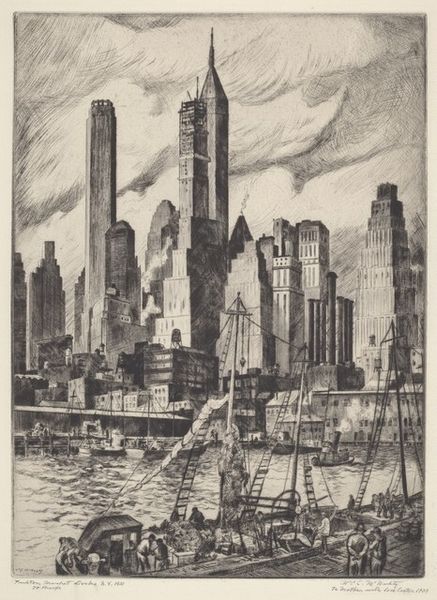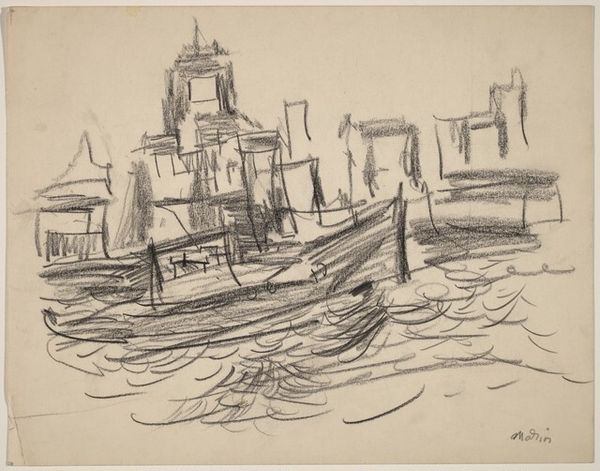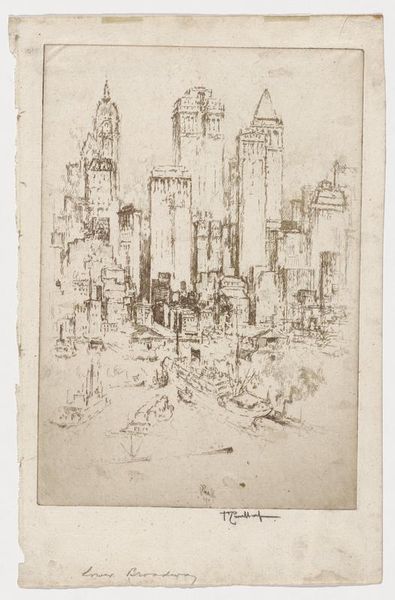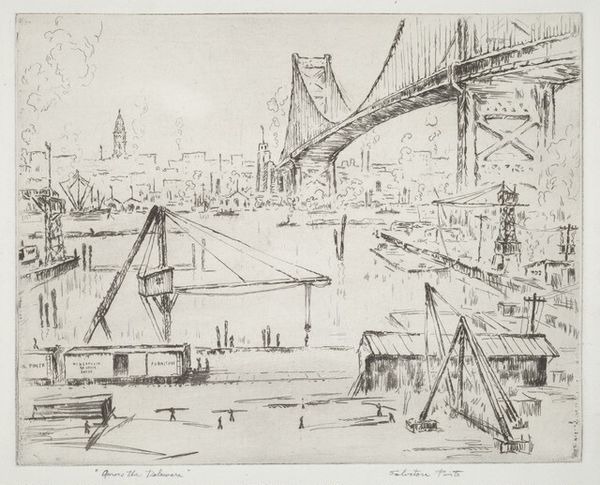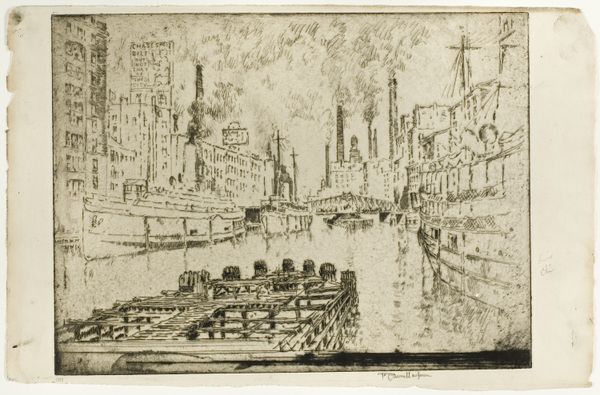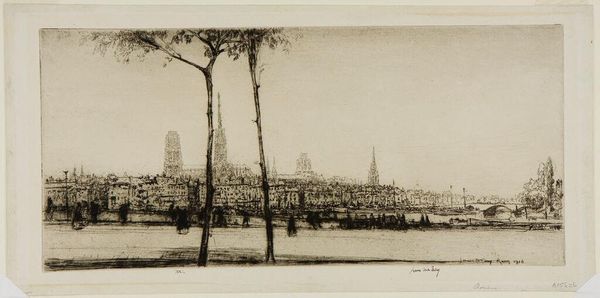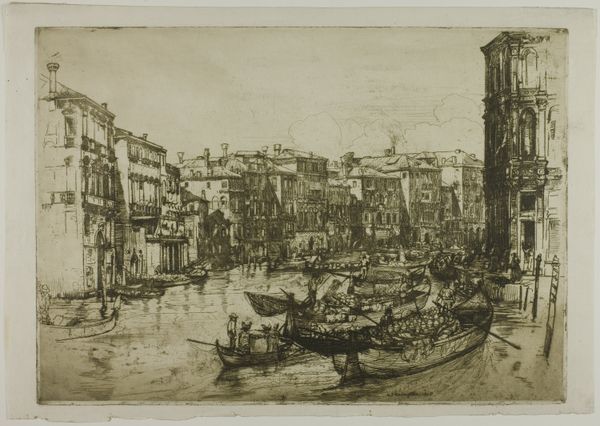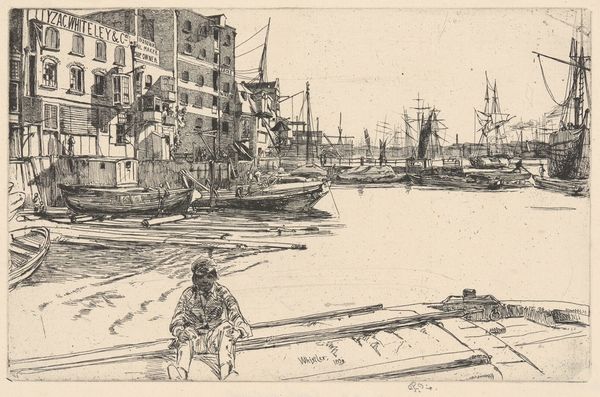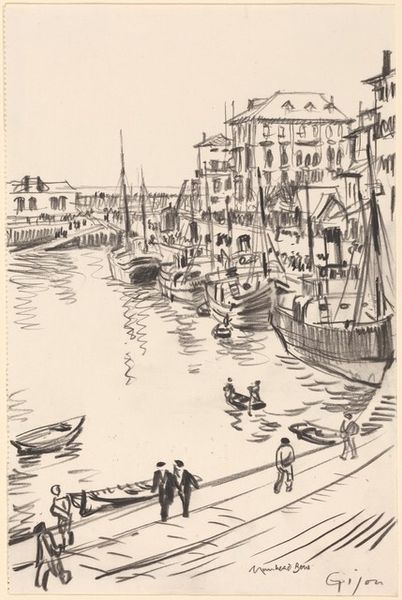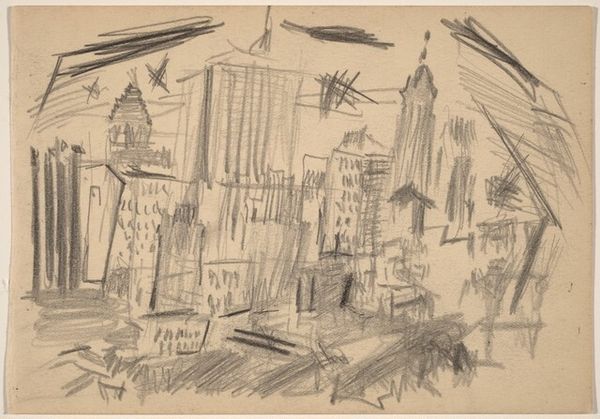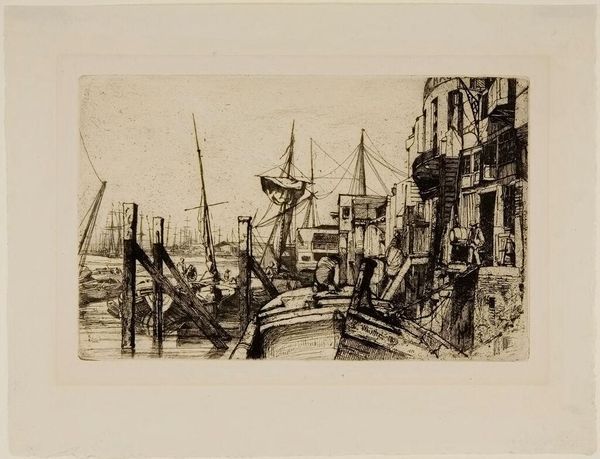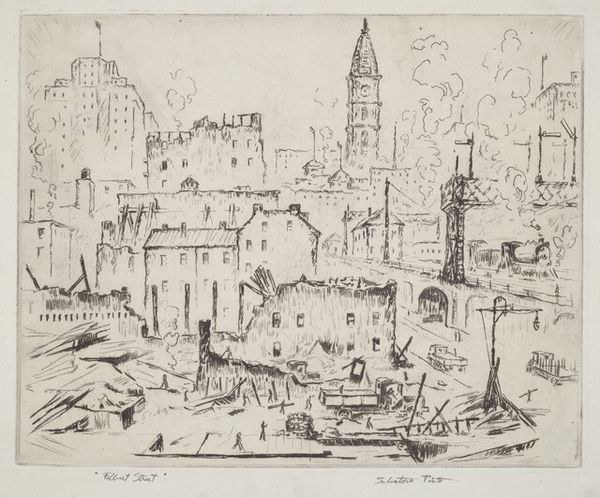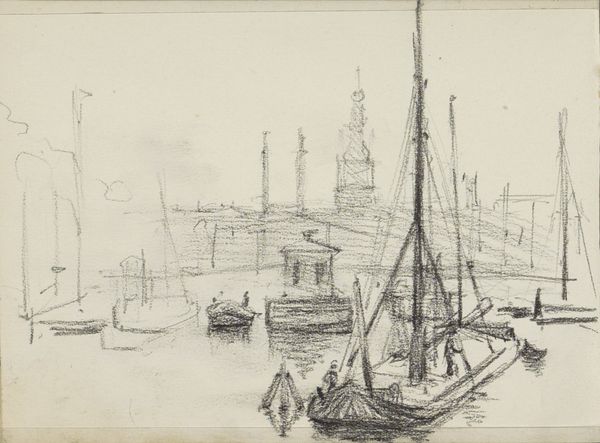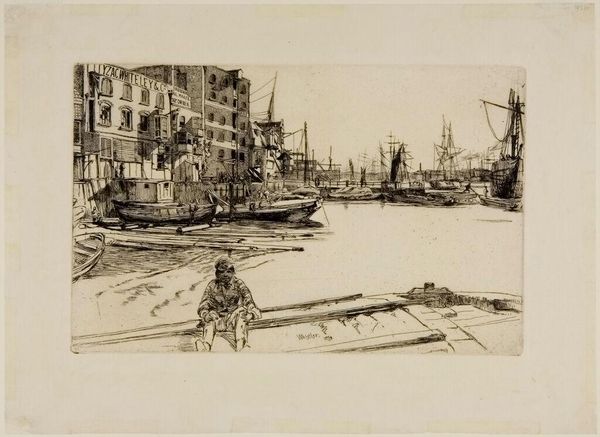
print, etching
# print
#
etching
#
geometric
#
line
#
cityscape
#
modernism
Dimensions: image: 175 x 244 mm sheet: 238 x 324 mm
Copyright: National Gallery of Art: CC0 1.0
Editor: This is Emil Ganso's "New York Waterfront (No. 1)" from 1927, an etching. I’m struck by how this very traditional printmaking method is used to portray such a modern, industrial subject. What's your perspective on it? Curator: It's crucial to understand the materiality of the work. Ganso's choice of etching – a laborious process involving acid, metal plates, and a printing press – contrasts sharply with the smooth, soaring aspirations embodied by the modern city it depicts. Think of the skilled labor involved in crafting the copper plate and the subsequent prints. How does this hand-made aspect interact with the mass-produced structures in the background? Editor: That's fascinating! So, you see a tension between the craft and the subject matter? Curator: Precisely. The print captures New York's rapidly changing urban landscape, reflecting the socio-economic forces at play during the interwar period. Etching, traditionally a medium for reproducing images for mass consumption, now depicts the burgeoning capitalist engine. Consider the working waterfront itself: How are commodities moved, and at whose expense? Editor: The ships certainly hint at commerce and labor. I didn't really think about it until now. Curator: What about the composition itself? Note the dense concentration of lines in the buildings, in comparison with the open water. Does that create any implications regarding access and ownership, specifically? How does the artist create space and depth with the etched lines, what does that say about the industrial developments? Editor: Now that you point it out, there is a striking difference between the sharp and complex lines used for the city and boats with the relative lack of etching in the open sea. Curator: Exactly! We’re looking at how materials and production become inherently entwined with social commentary, turning a cityscape into a deeper reflection on labour and economic forces. Editor: This completely changes how I view this seemingly straightforward print. Thanks for illuminating the socio-economic dimension behind it!
Comments
No comments
Be the first to comment and join the conversation on the ultimate creative platform.
